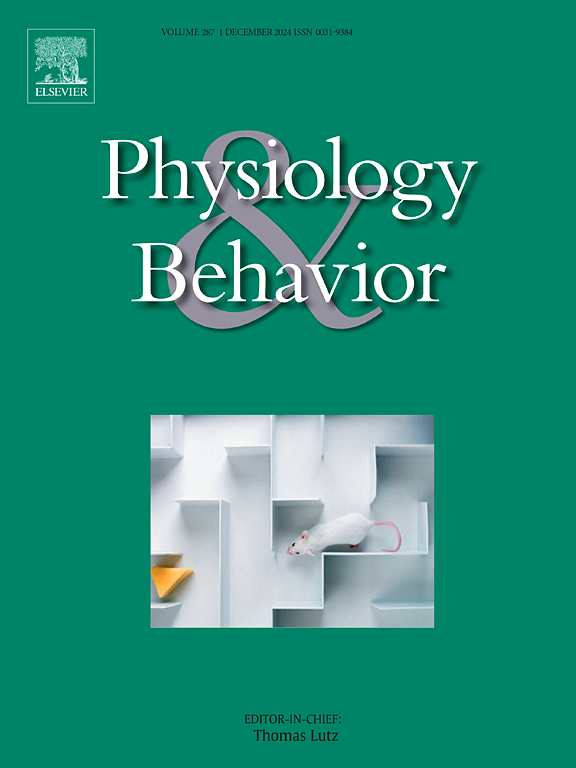青少年游泳运动诱导大鼠大脑皮层的系统适应和分子变化。
IF 2.5
3区 医学
Q2 BEHAVIORAL SCIENCES
引用次数: 0
摘要
目的:青春期是一个关键的发育窗口期,在此期间体育活动可以对大脑功能和健康产生持久的影响。然而,在这一时期,有组织的锻炼对分子的影响仍然知之甚少。本研究调查了青春期为期五周的渐进式游泳方案是否会诱导大鼠大脑皮层的行为和分子适应。材料和方法:将12只雄性Wistar大鼠分为久坐组和运动组。运动组从出生后第41天(P41)至第73天进行游泳训练。从P76到P79,动物们接受了行为测试。在P80,他们被安乐死以采集血液和大脑皮层。ELISA法检测血浆鸢尾素水平,Western blotting法检测皮质蛋白。结果:久坐大鼠体重高于运动大鼠。虽然运动增加了运动能力和探索倾向,但对记忆没有影响。结论:即使在没有明显的行为改变的情况下,青春期有组织的游泳运动也能诱导与神经可塑性和氧化还原调节相关的皮质分子适应,这支持了早期体育活动增强潜在的大脑恢复机制的假设,这可能对未来的生理或病理挑战至关重要。本文章由计算机程序翻译,如有差异,请以英文原文为准。
Adolescent swimming exercise induces systemic adaptations and molecular changes in the rat cerebral cortex
Objective
Adolescence is a critical developmental window during which physical activity can exert long-lasting effects on brain function and health. However, the molecular impact of structured exercise during this period remains poorly understood. This study investigated whether a five-week progressive swimming protocol during adolescence induces behavioral and molecular adaptations in the rat cerebral cortex
Materials and Methods
Twelve male Wistar rats were divided into Sedentary and Exercise groups. The Exercise group underwent a swimming protocol from postnatal day 41 (P41) to P73. From P76 to P79, animals underwent behavioral tests. On P80, they were euthanized for blood and cerebral cortex collection. Plasma irisin levels were measured by ELISA, and cortical proteins were analyzed by Western blotting.
Results
Sedentary rats showed higher body weight than exercised rats. While exercise increased locomotor and exploratory tendencies, it did not affect memory. Exercised animals had elevated cortical BDNF and NRF2, with no change in irisin levels
Conclusion
Structured swimming exercise during adolescence induces cortical molecular adaptations related to neuroplasticity and redox regulation, even in the absence of overt behavioral changes, supporting the hypothesis that early-life physical activity enhances latent brain resilience mechanisms that may be critical under future physiological or pathological challenges.
求助全文
通过发布文献求助,成功后即可免费获取论文全文。
去求助
来源期刊

Physiology & Behavior
医学-行为科学
CiteScore
5.70
自引率
3.40%
发文量
274
审稿时长
47 days
期刊介绍:
Physiology & Behavior is aimed at the causal physiological mechanisms of behavior and its modulation by environmental factors. The journal invites original reports in the broad area of behavioral and cognitive neuroscience, in which at least one variable is physiological and the primary emphasis and theoretical context are behavioral. The range of subjects includes behavioral neuroendocrinology, psychoneuroimmunology, learning and memory, ingestion, social behavior, and studies related to the mechanisms of psychopathology. Contemporary reviews and theoretical articles are welcomed and the Editors invite such proposals from interested authors.
 求助内容:
求助内容: 应助结果提醒方式:
应助结果提醒方式:


